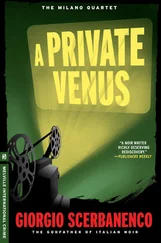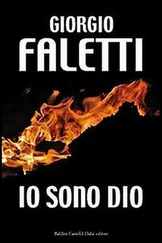Standing in the middle of all those policemen was a little boy, about twelve, in a red T-shirt, lowrider jeans hanging down to his knees, and Nike sneakers. He was holding a cell phone.
He looked at the policemen one after another, not in the least afraid. Then he flashed a huge grin, revealing a broken tooth, and remarked in earnest, ‘Holy shit, man! Cool!’
It was almost two in the morning when Hudson McCormack pulled up near the wharf at the Fontvieille marina, stopping in front of a large cabin cruiser with blue fenders, moored between two yachts. He got off his scooter and kicked down the stand before taking off his helmet. He had rented a scooter rather than a car, because he thought it would be easier in the Monte Carlo traffic. The city was already chaotic in the summertime and getting around by car was a real drag, despite the many parking garages. But during the regatta, Fontvieille was a huge scrum of people coming and going – crews, media, sponsors and their representatives, not to mention the hordes of fans and onlookers.
Getting anywhere was a constant obstacle course and the best way to wriggle through the commotion was by motorbike. Plus, wearing goggles and a helmet was an excellent disguise to keep from being recognized and stopped at every turn by someone asking about his boat.
Looking at the enormous cruiser, Hudson McCormack thought of the endless debate over yachts and motorboats that often exploded in furious bar-room arguments between aficionados of one or the other. To him, the distinction was meaningless. They were all motorboats, except that a yacht doesn’t have a traditional propeller or gear cranks, cylinders, pistons and fuel located somewhere under the hull. A yacht’s motor is the wind. And like all motors, it has to be analysed, understood, its pulse regulated, and its natural advantages exploited to the utmost.
While watching car races, which he loved, he had seen engines explode in a sudden burst of white smoke. Many times, he had seen single-seaters pull off the track as the others raced past, and the driver would get out of his car and bend over the rear axle, trying to understand what had betrayed him.
It was the same for boats. A yacht was also subject to the whims of its motor – the wind – which twisted, changed direction, rose or fell as it pleased. Unexpectedly, without any warning, the sails could fall limp while just a dozen yards away your opponent’s boat was speeding along with the bright-coloured spinnaker so swollen that it looked like it might burst.
And sometimes that too could happen. The ripping of the sail made a noise like a huge zip, and organized chaos ensued: the excitement of changing the damaged sail, the skipper’s orders, the instructions of the tactician, the crew members crossing the deck like dancers on a moving stage.
Hudson McCormack had no personal explanation for all of that. He only knew that he adored it. He didn’t know why he felt so good when he was at sea, and he didn’t care. You don’t analyse happiness, you live it. He knew he was happy on a boat, and that was enough.
He was suddenly excited for the coming regatta. The Grand Mistral was a sort of dress rehearsal for the Louis Vuitton Cup at the end of the year, which was itself a competition to find a challenger to take on the holder of the Americas Cup. This was when you showed your cards before reshuffling them if you needed to. The crews sized one another up, tried out their boats and tested the innovations designed to make them more competitive. Afterwards, there would be plenty of time to make the necessary changes before the most important and prestigious race of them all.
Everybody came to the Grand Mistral. Experienced crews and newcomers, even absolute beginners like Mascalzone Latino, a new Italian boat. The only one missing was Luna Rossa, the boat sponsored by Prada, still training at Punta Ala.
Hudson’s team’s boat, Try for the Sun, was parked with all its gear in a rented shed equipped for haulage and launching near Cap Fleuri, a few miles from Fontvieille. The workers were staying there too, in spartan but functional accommodation. The boat had to be under close watch twenty-four hours a day, so that prying eyes would not discover the top-secret details. In ocean racing, as in car racing, a revolutionary idea can mean the difference between triumph and defeat. Ideas were unfortunately easy to copy, and everyone tried as hard as possible to keep the details of their boats, the Formula 1 vehicles of sailing, hidden.
Of course it was to their advantage that most of the aerodynamics, so to speak, were located underwater. You never knew what could happen, though. There were oxygen tanks and underwater cameras and unscrupulous people. Someone who was shallower than him – Hudson McCormack smiled to himself at that word – might think such precautions excessive.
But substantial economic interests were at stake as well as the honour of victory. It was not for nothing that all support crews had artificial respirators on board, the ones that use oxygen, not air, invented during the Second World War for underwater attacks. They recirculated carbon dioxide so that divers could approach an enemy ship without revealing their presence through air bubbles rising to the surface.
Wooden legs, eye patches and cutlasses were not in style and the skull and crossbones no longer flew over the ships, but buccaneers were still around. Their progeny were alive and well and spread over the seven seas. Kings and queens no longer dispensed fleets of caravels, but sponsors gave out millions of dollars instead. The men and the boats were different, but the reasons were the same. They had merely substituted a sophisticated weather-forecasting system for what was once ‘the pointing of a moistened finger’ to find out which direction the wind was blowing.
The crew of Try for the Sun, to which Hudson belonged, were staying aboard the yacht flying their sponsor’s corporate colours in the Fontvieille marina. It was all a question of PR. The venture’s backer, an international tobacco company, intended to get as much publicity as possible. And quite frankly, with the amount of money it had put down, Hudson figured it had every right.
The official presentation of the boat and the crew was held at the Sporting Club d’Été. All the members of the team had attended in their sailing uniforms, which Hudson found much more elegant than the tuxedos and evening gowns of the other guests. At one point, the master of ceremonies had requested everyone’s attention: a skilful play of lights, a drum roll from the orchestra, and they had run out from either side of the room to stand in a row in front of the guests, while images of Try for the Sun were projected on the wall behind them. ‘We Are the Champions’ by Queen, arranged especially for the occasion, was played with a large string section to evoke gusts of wind in the sails.
They were introduced one by one and each received a round of applause as he stepped forward at the announcement of his name. They were strong, agile, intelligent men of expertise: the best the sport had to offer. That, at least, was the way they were presented and it was nice to believe it for a little while.
After dinner they had moved on to a nightclub, Jimmy’z. They were athletes and usually behaved themselves. Their mindset and attitude could be described by the adage, ‘Early to bed, early to rise.’ But they were not going to sea the next day and the team management thought that a little moderate partying could only help the crew’s morale.
Hudson locked a chain around his scooter. It was a big chain, covered in clear red plastic to match the scooter itself. They had all told him that there was no need to worry about thieves in Monte Carlo, but this habit was ingrained. He lived in New York City, where people could steal your shirt without even touching your back. Taking precautions was part of his DNA.
Читать дальше










